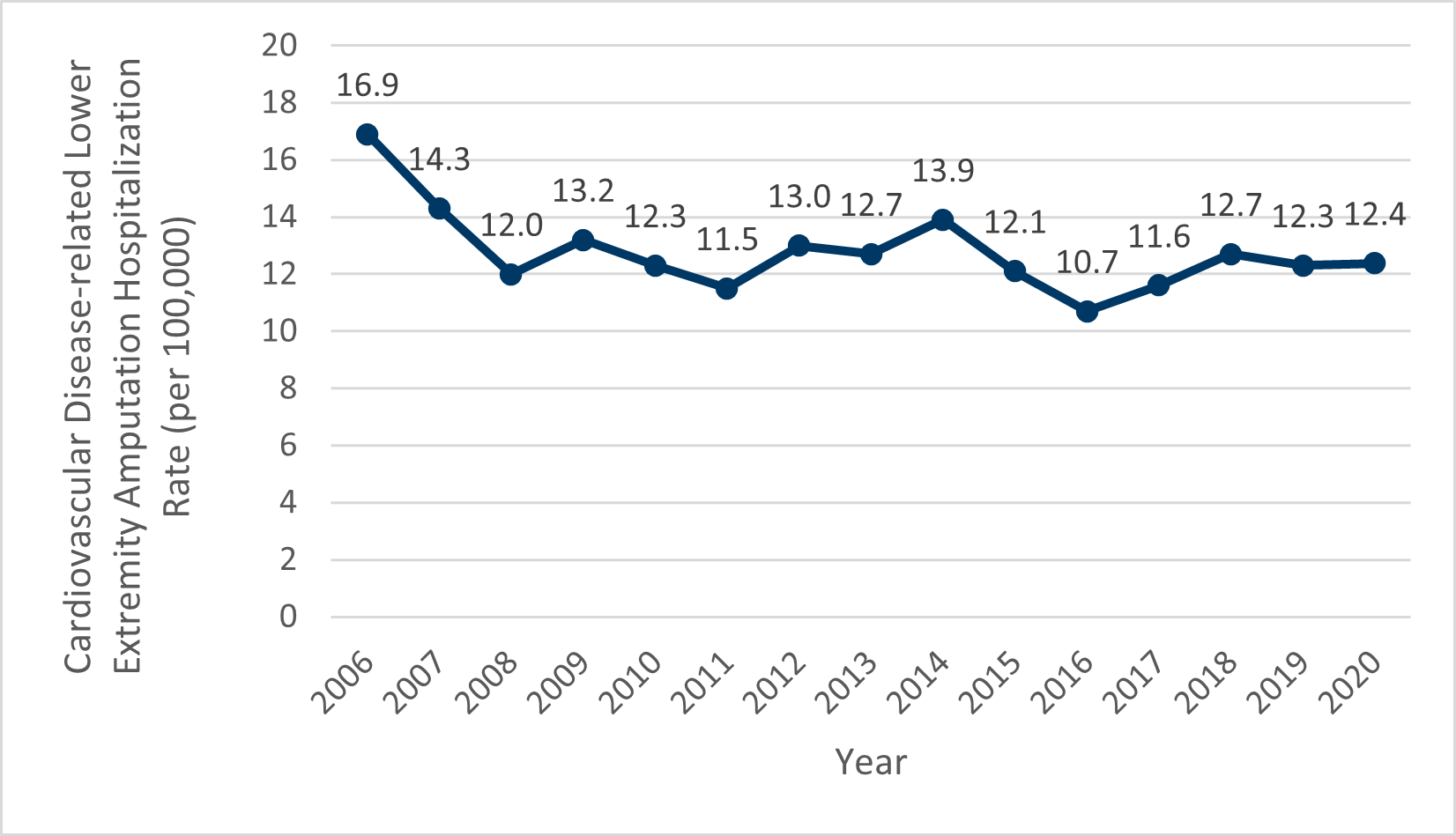Cardiovascular Health
- Cardiovascular Health Home
- CVH Data and Trends
- CVH Programs & Resources
- Minnesota 2035 Plan
- Minnesota Stroke Program
- About Us
Learn More
Related Topics
Contact Info
Cardiovascular Health Program
Cardiovascular Health Indicator
Measure: Potentially Preventable Amputation Hospitalizations
| Indicator | Date of Most Recent Measure | Current Measure | Trend |
|---|---|---|---|
| Age-adjusted rate of hospitalization among adults with cardiovascular disease for lower-extremity amputations (eg. ankle, foot, and leg, but excluding toes) | 2020 | 12.4 per 100,000 |
Stable |
Overview
- Lower-extremity amputations are among the most serious consequences of Peripheral Artery Disease (PAD). PAD narrows the arteries in the legs, which limits blood flow to the muscles. People with diabetes, obesity, high blood pressure or high cholesterol, and people who smoke have a higher risk of developing PAD.
- In 2020, there were 614 hospitalizations of Minnesotans which included cardiovascular disease-related lower-extremity amputation, or a rate of 12.4 hospitalizations per 100,000 people.
- The total number of cardiovascular disease-related lower-extremity amputations have ranged 498 at the low end to 665 at the high end over the 2006-2020 period. The lowest rate of 10.7 per 100,000 people occurred in 2016, with a stable rate at a slightly higher level since then.
Last Updated: 01/05/2023
